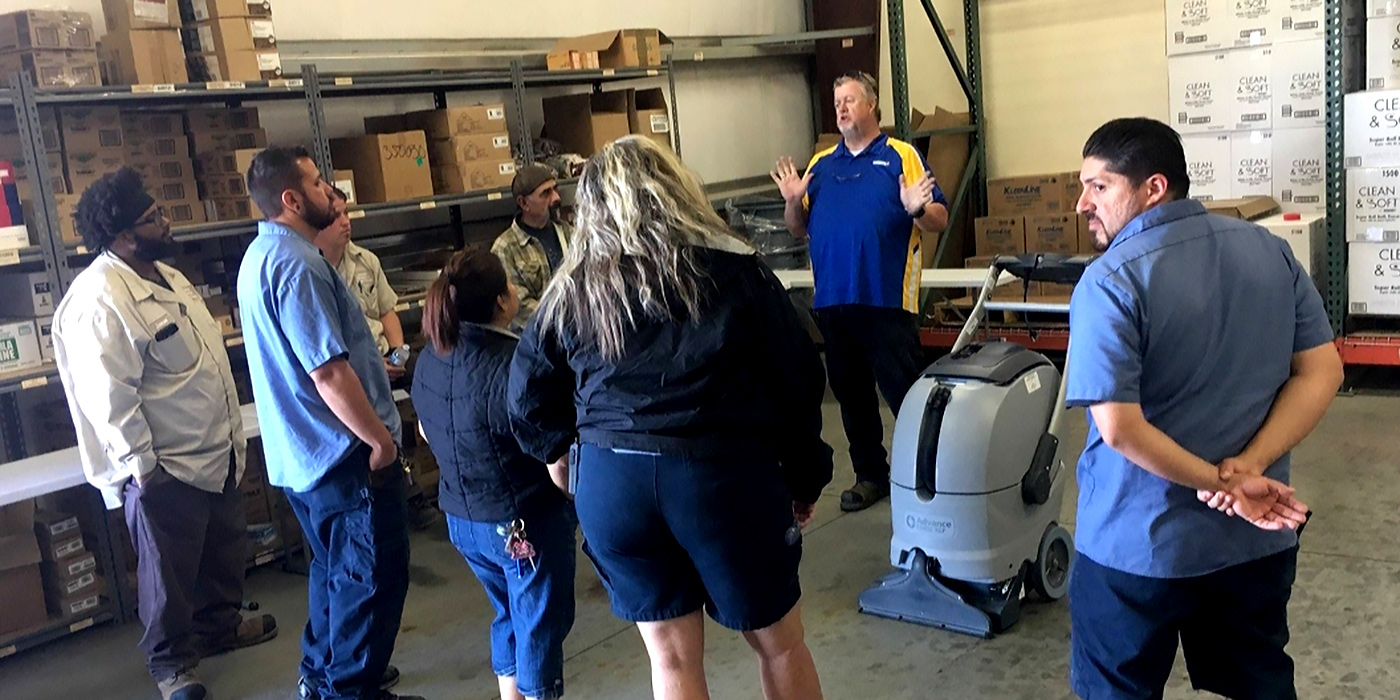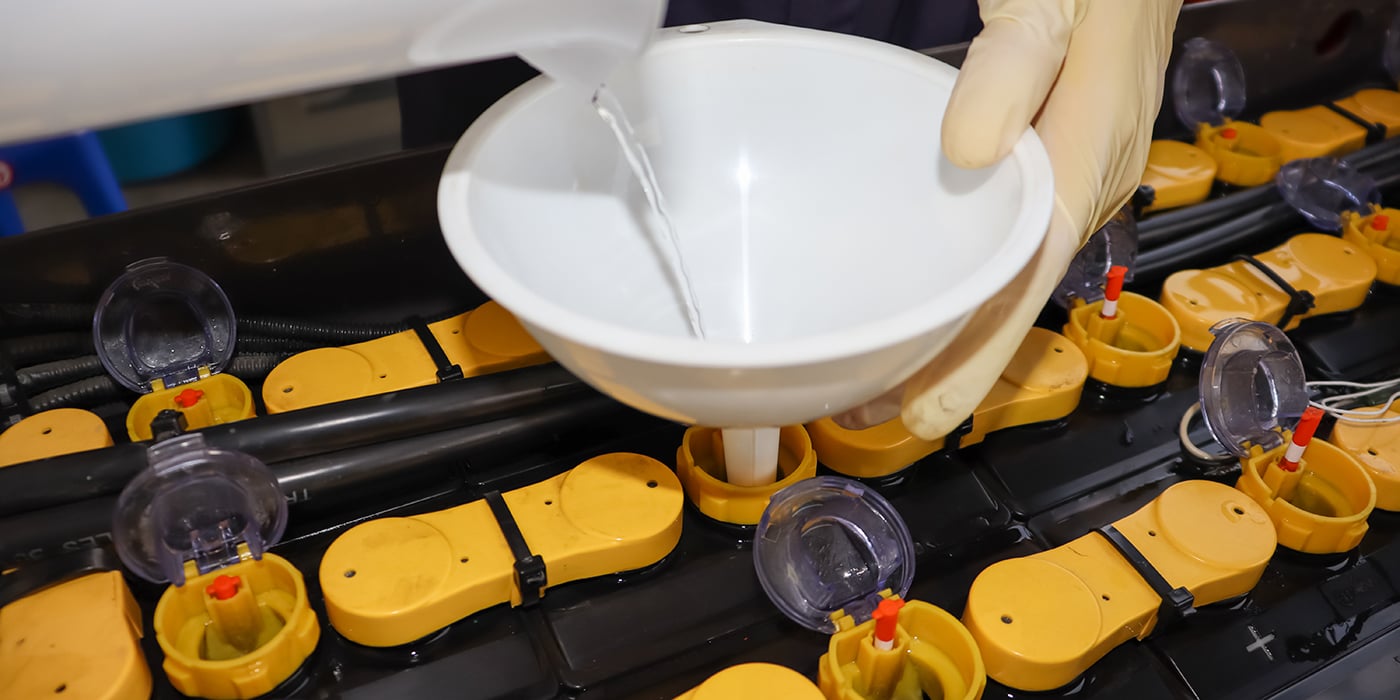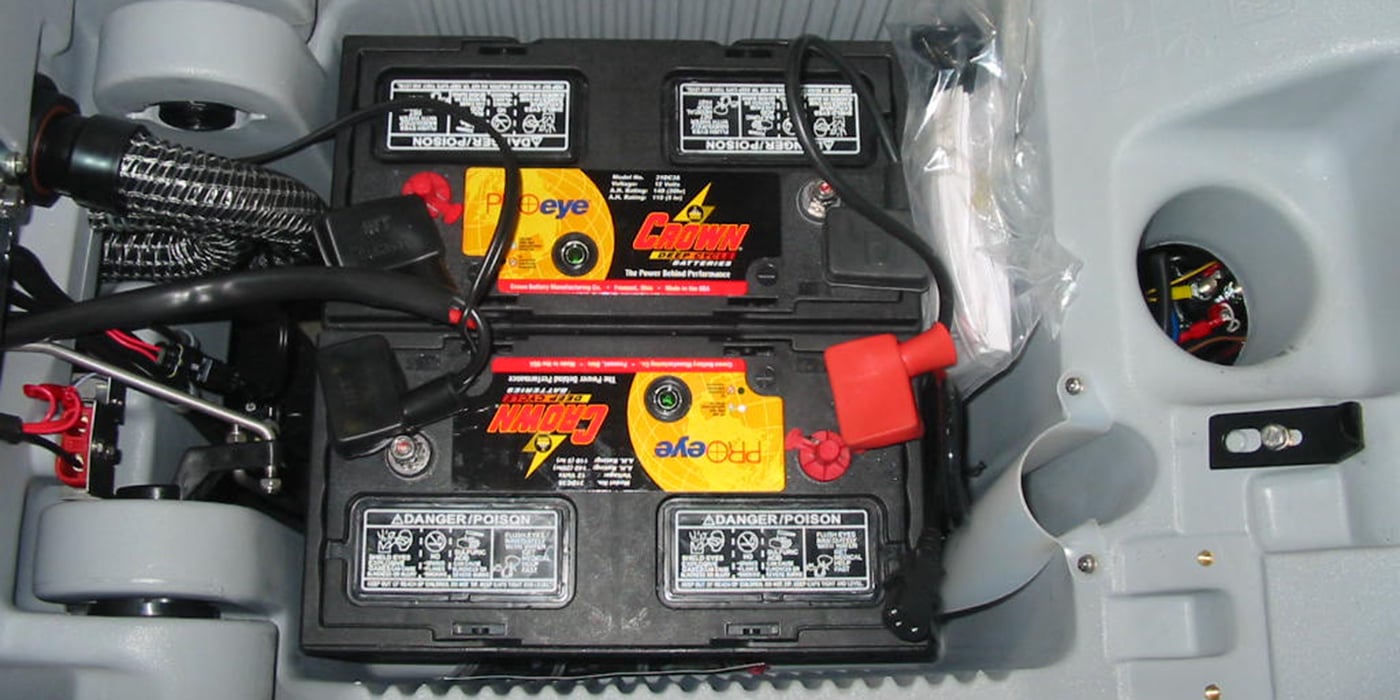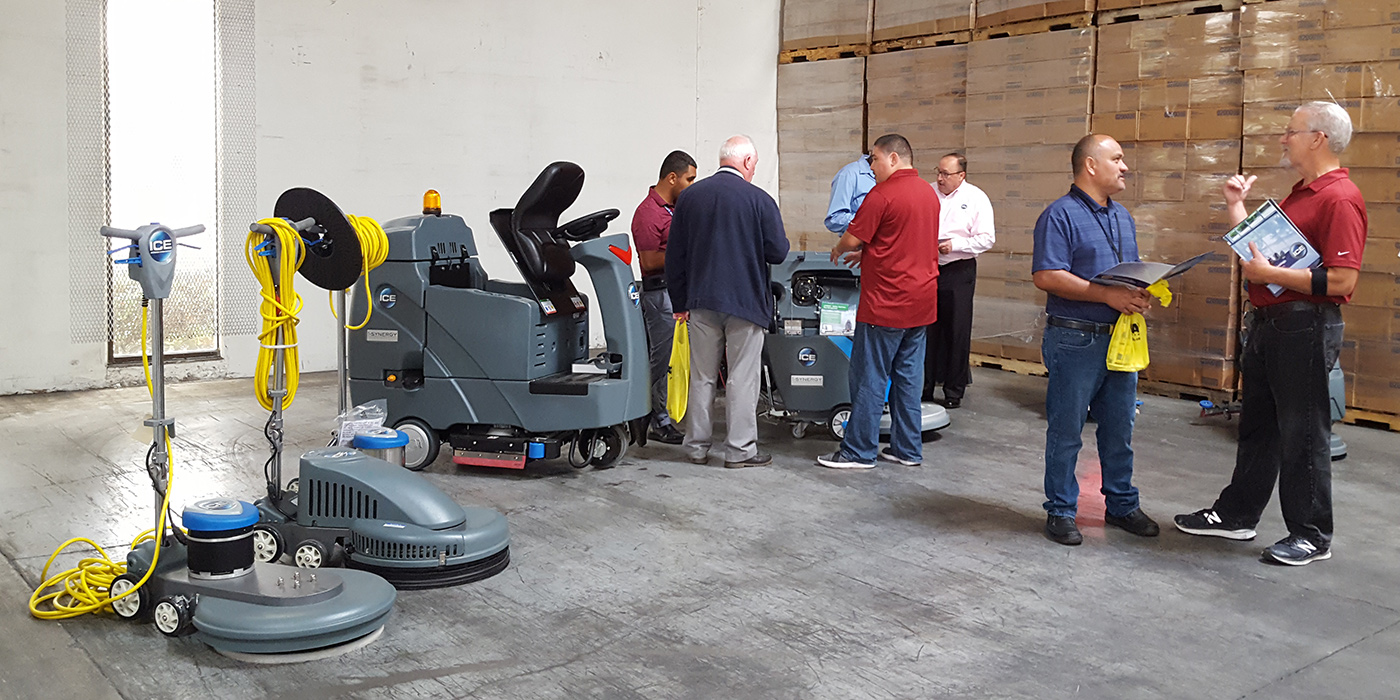
By: Mike Anderson | March 4, 2021
There are many different varying opinions on how to maintain deep cycle batteries, so always refer to the manufacturer’s instructions. With that said, I have learned a few things over the years and found that the following advice works in most scenarios.
In general, batteries are designed well and last many years IF maintained properly. Maintenance includes “watering” of wet cell batteries, as well as monitoring the amount of charge cycles a battery can consume. Batteries don’t go bad in general, users cause the batteries to go bad. This is NOT pointing a finger at a specific user, or users, but explaining the lack of training users of battery equipment receive, or retain.
Charging Frequency
Let’s briefly discuss charging frequency. Batteries need to be exercised. They don’t like to sit fully charged (or uncharged), and not be used. If they sit, they succumb to a process called sulfation (another subject for another story) which basically kills the cells inside the batteries. Batteries can accept a rough range of 500-700 charge cycles before they just won’t charge anymore. A charge, whether 30 minutes, 8 hours, or 1 week is still considered a charge cycle.
There are what we refer to as “opportunity charges” which basically means if you typically get 3 hours out of a complete cycle, but you know you need 3-1/2 hours that day, you can plug in your machine mid-day (perhaps the lunch period) for an opportunity charge. This will give you another 30-60 minutes of run time. This opportunity charge will still cost you a charge cycle.
If you don’t use your machine 3 hours that day, but only use it say 1 hour, you should still have 2 hours of charge remaining. Do you want to use a charge cycle today when you really don’t need to? Plan your uses and charge cycles and use them sparingly so your batteries last longer.
Only use distilled water after the charge cycle is complete
Battery Maintenance
Wet cell batteries need to be watered regularly. There is only one product that can be safely used to replenish a battery compartment and that is distilled water.
I then emphasize using ONLY distilled water. It is critical to add distilled water only after the charge cycle is complete. Batteries expand as they are charging (heat), and the amount of liquid that needs to be used to replenish is less than when the batteries are not charged.
If batteries are overfilled, they tend to boil the water out of the cell caps, making a mess and creating a safety hazard. When batteries are charging, the liquid inside is literally boiling. Boiling water expands and off gasses, which has to go somewhere.
I use another analogy of a pot of boiling water on the stove. If overfilled, when the water reaches a rolling boil, it will expand and boil out of the pot. The same principle applies to each battery cell/compartment, it will boil out of the cell/compartment if overfilled.
Batteries should be only filled to the top (or slightly above) of the plates. Basically an inch from the top of the battery. Don’t overfill, which causes the water to boil out. Do ensure that the plates inside the batteries are constantly covered with distilled water at all times because the water boils every time the batteries are charged, causing water in each cell/compartment to evaporate. If that water is not replenished, it causes the lead plates to become exposed to air and they essentially cook themselves, like heat on bare metal, ruining the overall health of the battery.
Check all battery cells often as part of your regular maintenance schedule
Best Practices
Storage of all battery equipment should be in a well ventilated area for safety. Wet cell batteries boil when charging, and with vented caps, produce a rotten egg smell if overfilled, or the charger is defective and continues to charge the batteries.
That isn’t a huge problem for sealed batteries, but again for safety, if a battery is defective or becomes too hot it can explode.
Lithium types and sealed batteries do not “off gas” so you will not smell anything as the batteries are charging, but should still be treated as a wet cell battery, and charged in a well ventilated area.
Maintenance Schedule
There is no real defined maintenance schedule that I am aware of when it comes to batteries. I tell users that at a bare minimum to check ALL cells at least once a week to be safe. More frequently if the machine is used on multiple shifts, many days of the week. Each facility should have a designated person in charge of battery maintenance, so there is no finger pointing when the batteries go bad because no one checked the batteries.
Train your team on proper maintenance procedures
Training
Charging frequencies differ from facility to facility, as well as manufacturer to manufacturer. Additionally, a facilities person at a specific location might be a seasoned pro at maintaining his or her batteries, but they leave or move to a different department, and then the new person that uses the equipment has never been trained on battery maintenance.
There needs to be a designated “person in charge” at every facility who is responsible for the care of deep cycle machine batteries. It’s a simple assignment, but a difficult one to police. Would recommend training everyone who uses the equipment in proper maintenance procedures, including battery maintenance, but having a a point-person assigned to daily battery maintenance.
Return on Investment
The cost of replacing 1 or 2 or 4 or 6 batteries can be at the low end of $100 up to and a common charge of $2,000. Batteries will eventually give up, they will stop accepting charges and die. At some point, this $100-$2,000 replacement cost is inevitable, however why speed up the process of replacing batteries in 6 months when they should realistically last 2 to 2-1/2 years with proper maintenance.
The industry we are in is slowly moving away from flooded/wet cell batteries and moving more towards a safer, less maintenance sealed battery, and now more prominent, lithium type batteries. With the use of wet cell/sealed, such as AGM and gel/lithium types there is no longer the excuse that the batteries were not watered.
Yes, the cost of a sealed battery is more upfront, and a lithium is dramatically more, but in the long run they pay for themselves in longevity.
Contact your WAXIE Account Consultant today to schedule a training session or learn more about cleaning equipment, preventative maintenance programs, and necessary maintenance.
Mike Anderson is the Commercial Equipment Specialist and Consultant for WAXIE Ontario. He is IICRC certified for carpet and hard floors, and an expert in hard and soft floor care maintenance, restoration and solutions. You can find Mike on Instagram, Twitter and YouTube where he posts about his two favorite things – equipment & floor cleaning challenges!







